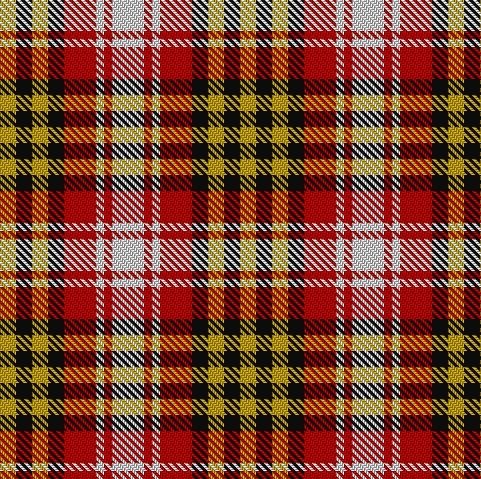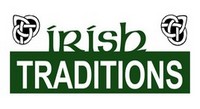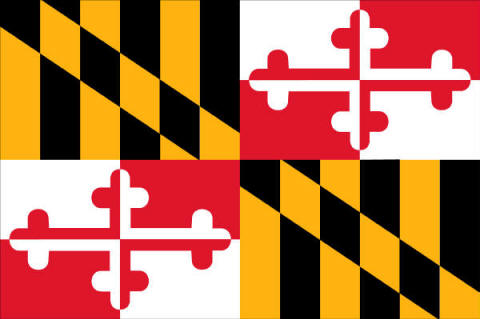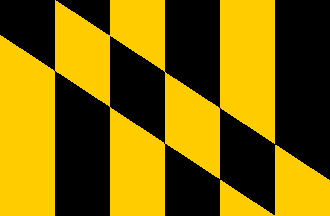
At least forty states have a total of more than forty-four district tartans of which perhaps thirty-four are official state symbols (twenty by statute). Why shouldn't we here in Maryland have an official state tartan? That's what I thought, so I designed a tartan for Maryland based on the state flag.  Tartan FAQ |
| What could we use a state tartan for? |
|---|
Once a solely Scottish or Irish fashion, the tartan is now an internationally recognized symbol. People, businesses, organizations, and governments throughout the world are registering their own tartan designs with the official government Scottish Register of Tartans. Once approved, the proposed Maryland State tartan can be used to showcase Maryland around the world.
|
| But don't we have enough state symbols? |
|---|
Actually, Maryland is below average in that regard. One consolidated source for state symbols is the State Symbols USA web site. They count things such as the flag, statehouse, seal, etc. and by their count...
|
|
The threadcount over half a sett with a full count at the pivot points is Y/16 K16 Y16 K16 R32 W8 R8 W/32 (where Y=Yellow; K=Black; R=Red; W=White). And here is what that looks like... 
|
| State Tartan News |
|---|
 On July 11 2019, Missouri Governor Mike Parsons signed SB210, officially designating the ‘Show-Me’ tartan as the official state tartan. On July 11 2019, Missouri Governor Mike Parsons signed SB210, officially designating the ‘Show-Me’ tartan as the official state tartan. |
| the proposed Maryland State Tartan Gets Around |
|---|




|
Background, Rationale and History of the TartanThe original idea was for a great kilt to be sold at the Maryland Renaissance Festival with a tartan unique to the local area. Once I settled on the idea to use the Maryland flag as the basis for my design, the concept was expanded to become the Maryland State tartan. This design was completed and set aside for many years. With my discovery of the Scottish Register of Tartans, and verification that there is no pre-existing official Maryland State Tartan, a way became clear to have this tartan registered and finally woven. Once registered, my intention is to make this sett available to those who would like to wear a tartan that celebrates their Maryland connections. Besides kilts, tartan cloth is used to make shawls, sashes, ties, blankets, and many other items. According to the Scottish Register of Tartans,
"where a tartan is named after a country, a state, a district, a town or a city, giving the impression of an association with any central or local authority, public or private initiative, the application must be accompanied by a letter of authority from a prominent office-bearer in the appropriate body." In our case, that would be the Governor. And what better way to obtain his signature than at a bill signing. |
| Efforts to Make the Maryland State Tartan an Official Maryland State Symbol |
|---|
We had a bill!For the 2020 legislative session, Delegate Ken Kerr sponsored House Bill 0867. We had a hearing on March 12th in the Health and Government Operations Committee that went very well. And then the next day, we got Corona'ed! The Maryland General Assembly decided to adjourn early and only deal with emergency legislation. When the legislature ended "sine die" all unpassed bills died—until next time. We have a bill!For the 2020 legislative session, House Bill 0867 has been sponsored by Delegate Ken Kerr, Delegate Vaughn Steward and others. The hearing is scheduled for March 12th at 1:00 PM in the Health and Government Operations Committee. To provide your support for this bill, write, email, call, or visit your representatives and let them know that you are a constituent and that you support the effort to make the proposed Maryland State Tartan an official state symbol and why. To find your delegates click here. Past EffortsDuring the 2015 Maryland legislative session, Senator Ed Reilly introduced Senate Bill 114 to make the Maryland State tartan an official state symbol. A hearing was held in the Senate Education, Health & Environmental Affairs Committee but the bill was not passed out of committee. In the fall of 2015, the Annapolis Capital newspaper ran a wonderful article about the Maryland State Tartan, written by Elisha Sauers. For the 2016 session, Senator Ed Reilly has reintroduced the bill, this time it is Senate Bill 26. Delegate Michael Malone cross filed the bill as HB 303 along with 8 co-sponsors. Unfortunately, after a well-received hearing (click for the video and start at time 2:00:54) in the house Health and Government Operations Committee, the bill was still voted unfavorably and the senate bill was withdrawn. |
Where Can I Purchase Maryland State Tartan Items?
Visit: Irish Traditions, 141 Main Street, Annapolis, MD 21401, United States |
Description of the Maryland State Tartan
|
| Contact |
|---|
|
Send us an e mail to be added to our mailing list in support of the proposed Maryland State tartan foxyform |

| The intellectual property rights to this tartan are held by Paul Wiedorn US Copyright Office © registration number VAu001168697. |

 According to
According to  In the Maryland flag “the second and third quarters consist of a quartered field of red and white (representing silver) bearing a Greek cross with arms terminating in trefoils. The colors in the second and third
quarters alternate, with red on the white ground and white on the red.
The red and white quarters display the arms of Lord Baltimore's maternal family, the Crosslands.” In the tartan the Crossland arms are represented by a wide red stripe, a narrow white stripe, a narrow red stripe, and a wide white stripe at the repeating point. Placing the wide red stripe next to the black and the wide white stripe at the pivot point maintains a reflecting sett with the resulting tartan being arisaid but not dominated by white.
In the Maryland flag “the second and third quarters consist of a quartered field of red and white (representing silver) bearing a Greek cross with arms terminating in trefoils. The colors in the second and third
quarters alternate, with red on the white ground and white on the red.
The red and white quarters display the arms of Lord Baltimore's maternal family, the Crosslands.” In the tartan the Crossland arms are represented by a wide red stripe, a narrow white stripe, a narrow red stripe, and a wide white stripe at the repeating point. Placing the wide red stripe next to the black and the wide white stripe at the pivot point maintains a reflecting sett with the resulting tartan being arisaid but not dominated by white.